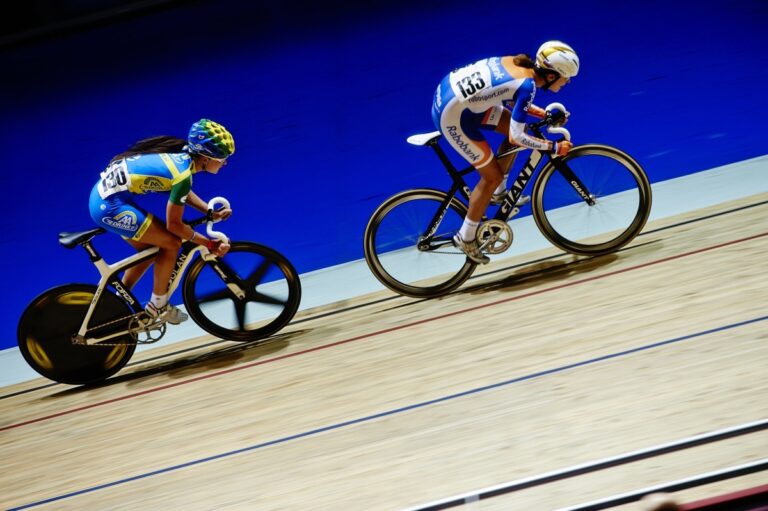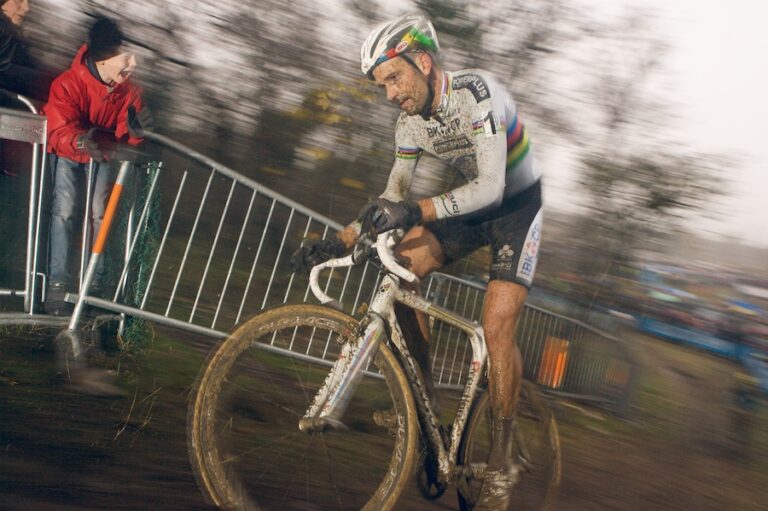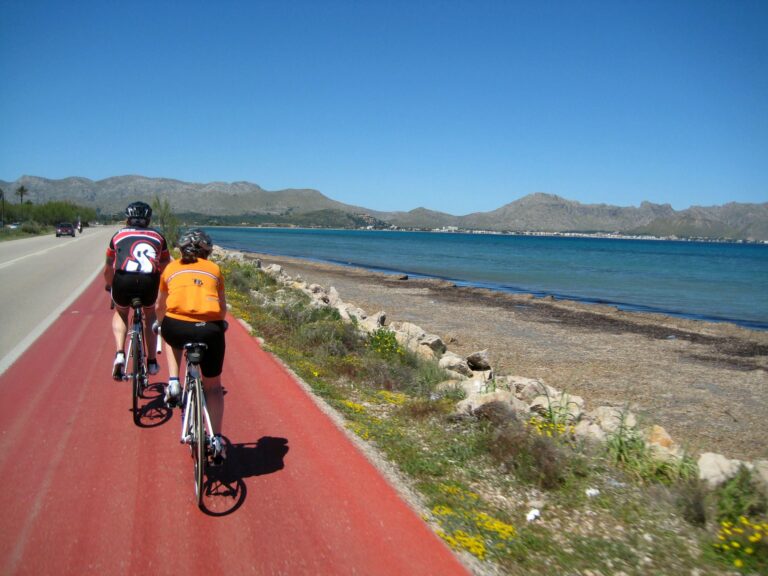This is where it happens.
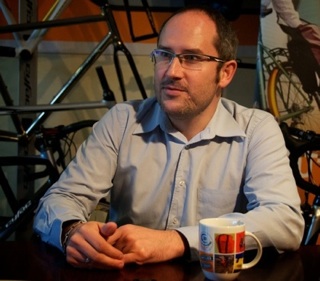
Far from the carefully constructed images beloved of the marketing departments of global mega brands, lies a small factory in the Loire Valley, with a complete staff of 15, and a client list that includes winners of the three Grand Tours, Monument Classics, and the world road race championship.
Cyfac was at one stage the choice of more than a third of the teams of the peloton, innovator of numerous manufacturing techniques, and now builder of bespoke carbon frames to the man in the street, providing his pockets are sufficiently deep.
“We are focussed on the high end, the custom,” says Cyfac’s manufacturing director, Aymeric Le Brun. “We sell more than a frame; we sell your frame. That is very different.”
While the increasing globalisation of professional cycling and the consequent colonosiation of the peloton by brands whose business model does not countenance the bespoke has ended Cyfac’s association with the sport’s elite level, the philosophy that once made them supplier to Fignon and Pantani, to Virenque and Brochard, continues in the small scale production of their headquarters near Tours.
Cyfac was founded in 1982 by Francis Quillon. A commission, initially for just 10 frames, from directeur sportif Cyrille Guimard for his Fignon-led Super U team began a relationship with the professional peloton that would see many of Quillon’s creations raced in the livery of some of cycling’s biggest manufacturers, Raleigh and Peugeot among them.
Quillon, a French speaker and a man of advancing years, does not attend our visit, but his presence is inescapable. He is unfailing referred to as Monsieur Quillon. Aymeric Le Brun, Cyfac’s managing director and former racer, seems bemused by the founder’s reticence. “He is not conscious of how history is important,” he confides. “For him, he only builds bicycles.”
Fignon rode one of Quillon’s Cyfac-branded Raleighs to victory at Milan-San Remo. The machine was a late replacement for one he had crashed earlier in the week, ordered on Wednesday and completed on Friday for the race on Saturday. “I’m not sure the paint was perfect,” Le Brun jokes. “Perhaps it was still wet.”
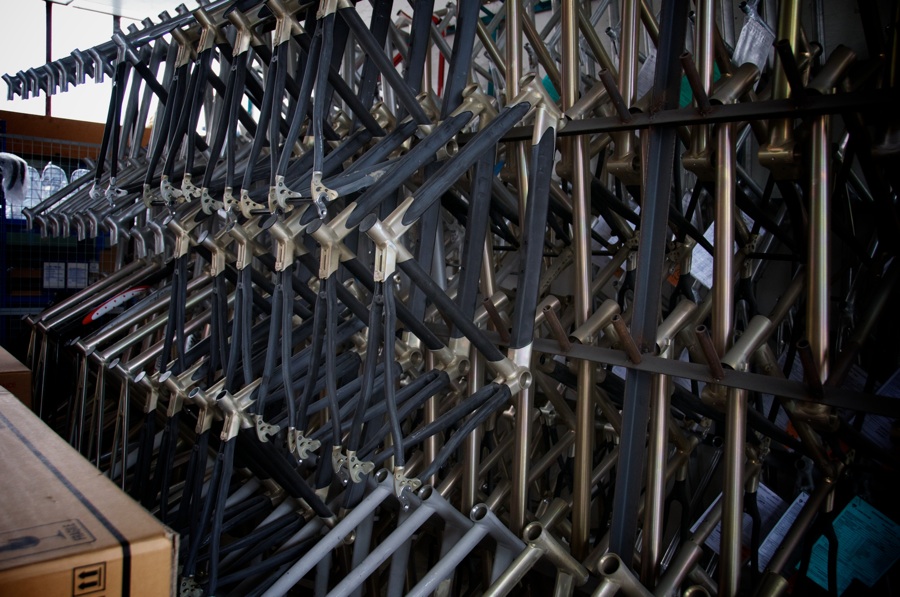
Cyfac was an established, if hidden, presence in the peloton when aluminium became the fabric du jour in the early 1990s. A strong relationship with Columbus (Cyfac frequently would be given prototype tubesets) led them into collaboration with other legends of the sport through their supply of Altech frames to the Carrera team of Claudio Chiappucci and Marco Pantani.
Richard Virenque, once the darling of French cycling, was aboard a Peugeot-branded Cyfac when the Festina scandal hit the 1998 Tour de France. His gregario, Pascal Hervé, a Loire-man from Tours, was a frequent visitor to Cyfac factory, Le Brun claims, and one he describes, perhaps diplomatically, as “a very unique person”. Another Festina rider, Laurent Brochard, won the 1997 world road race championship on a frame from Cyfac’s Loire factory.
Cyfac’s popularity among professional teams peaked in the 1990s when up to a third of the peloton rode their machines, the MBK machines supplied to Cofidis, among them. None were branded as Cyfac. That changed in 2000 when Quillon was asked to supply bikes to the new, Brochard-led Jean Delatour team. In the following year’s Tour de France, Brochard’s teammate, Lauren Roux, supplied an interesting footnote to the famous confrontation between Lance Armstrong and Jan Ullrich on the slopes of Alpe d’Huez. Roux was far up the road when Armstrong delivered “the look” before launching his attack: one that would cost the Frenchman the biggest win of his career. The airtime commanded by Roux’ effort, however, brought Cyfac 10 orders, placed the same day by customers watching in America.
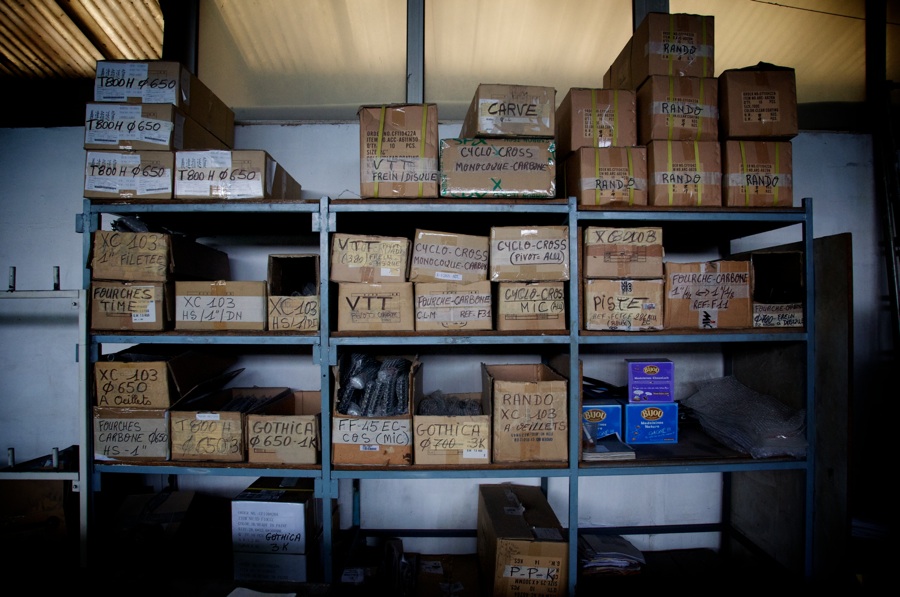
The mass production of carbon frames, a modus operandi entirely at odds with the bespoke production practiced in the Loire, ended Cyfac’s association with the peloton. Cannondale’s ability to supply frames FOC to the Saeco team also proved a game changer for small manufacturers. Le Brun estimates the cost of supplying a WorldTour team at a minimum of one million Euros a year. Additionally, he says, carbon construction has made the tube profile the manufacturer’s signature; were Wiggins to ride Cyfac’s flagship Absolu V2, no amount of Pinarello branding would disguise its shape. “We don’t have professional teams,” Le Brun states. “Our service is the marketing.”
Cadel Evans’ win in the 2011 Tour proved the possibility of winning aboard a bike made in Asia. “I will never say that what is made in Asia is bad; they are two different cultures,” Le Brun continues. “Why are we able to still make a bicycle in France? Because we have a concept.”
The process of building “your” frame begins with a measurement from Cyfac’s patented device, the Cyfac Postural System; one 10 years in development and with the appearance of a medieval instrument of torture, but from which a colleague, having stood upon in it in the attitude of Leonardo’s Vitruvian Man, survives unscathed, his height, arm length, shoulder width, shoulder height, and inside leg measurements gained, crucially, without the interpretation of the fitter, who merely jots down the readings and enters them in a computer programme from which data including saddle height, saddle-to-stem drop, stem and crank length is produced to create the design from which the frame will be made.
We follow the noise of machinery to the factory floor, a sizeable, but sparsely populated area at which large, industrial machines are positioned at regular intervals. Just 15 people work at Cyfac and each custom carbon frame takes 35 hours to produce. “It’s not mass production,” Le Brun says. “Each frame is a prototype; each frame is a new project. We set up the tools for only one piece. This looks crazy from an Asian perspective but at the end, the customer will have a unique product.”
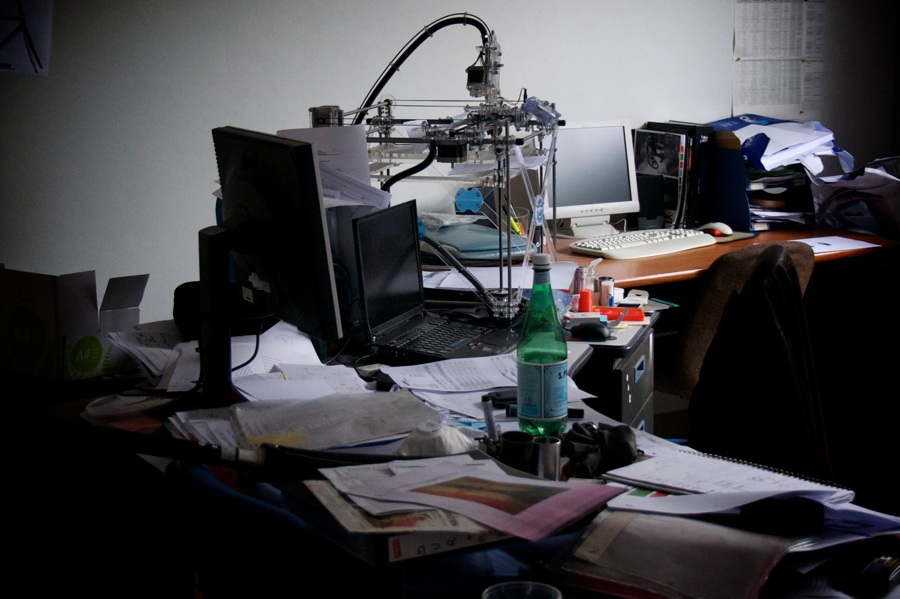
Our tour begins at the back of the factory with tall racks filled with tubes, some steel, some aluminium, some carbon. This seemingly inauspicious sight is a snapshot of Cyfac’s history. “It’s three different worlds, but the philosophy is the same. It begins with the custom drawing for the customer,” Le Brun says. The steel frames are made using the same techniques as those for the bikes supplied to Fignon. Similarly, the aluminium is welded and finished in the manner of those once produced for Chiappucci and co.
Carbon tubes first became been part of the materials stock at Cyfac 10 years ago; an embrace of the new without which the company would not survive (carbon frames now account for half of the 700 frames made each year Cyfac). The company’s approach to carbon – a continuation of the custom build philosophy described above; one on which Quillon had built his reputation – prohibited the well-trodden path to the Far East, and the purchase of a monocoque design from an open mould, and the later application of Cyfac decals.
Its embrace represented a more profound change at Cyfac perhaps than at bigger companies with a larger and more transitory workforce. For several of the staff, roots in the company run deep; one of the engineers has been with the company since its inception.
Le Brun says the move to carbon represented a three-fold challenge. Firstly, recruiting those with new skills; then teaching those skills to the existing workforce (“There is no school to learn producing a bike. You can be a welder, a painter, but for bicycles, it’s very different”) before finally persuading those who made the steel and aluminum frames on which the company’s reputation was founded of the necessity for change.
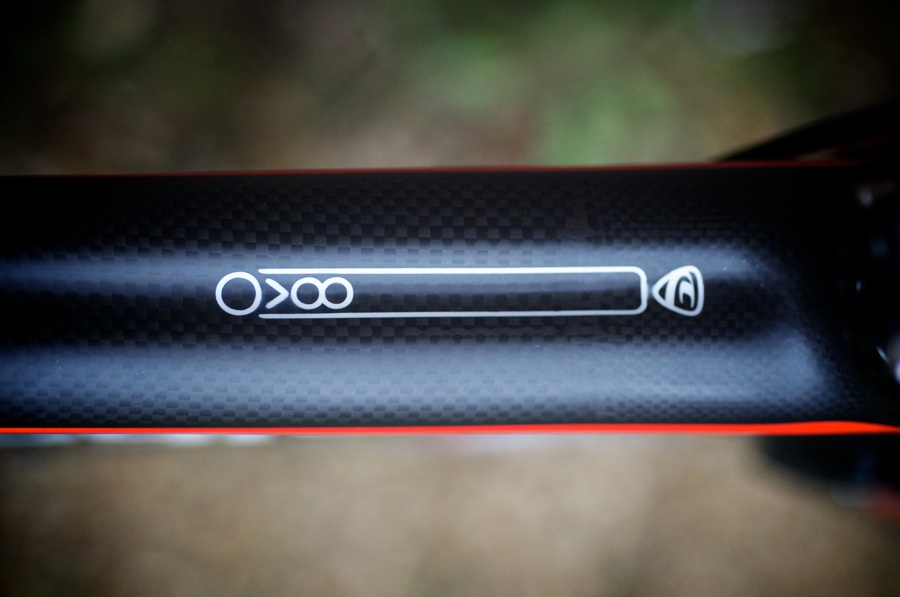
“Carbon changed completely the company,” says Le Brun. “Today, it is 50 per cent of our business. Maybe if we didn’t go to carbon, there would only be five or six people here. I wouldn’t need a secretary, or a production manager. I wouldn’t be able to invest in the Postural System.”
The bell-shaped profile of the tubes used for the Absolu V2, a development of an aluminium prototype made in 2004, is immediately identifiable. We are invited to compare the internal finish to those used for the now-superseded Tigre. Our attention is drawn to the Absolu’s internal cable routing and the delicate internal mesh with which the cable is held in place; a Cyfac specification and one they consider (rightly in our opinion) superior to the cable tie method used by some manufacturers.
While the tubes, designed in an office at the front of the factory, are made in Asia, the transformation from pipework to bicycle frame takes place in the Loire, as with deliveries of steel and aluminium stock from Columbus. The carbon tubes are cut to length in accordance with the measurements taken from the aforementioned Postural System, and, in the case of all but the Cadence, joined without lugs.
This last procedure takes place in a separate part of the factory from the storage area, one with an ambience closer to laboratory than factory. We’re ushered into this silent space to watch a white-suited engineer, his face concealed behind breathing mask and safety glasses, cut swatches from a roll of carbon weave, apply a coating of resin, and carefully place each one, with the aid of tweezers, over the tube junctions. It’s a painstaking process; one made hypnotic by the obvious skill with which it is being practiced.
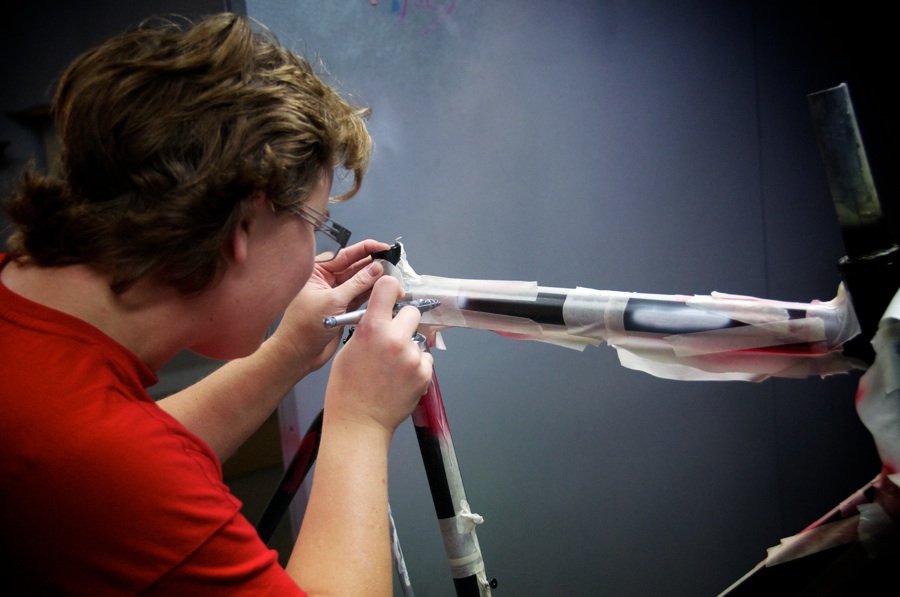
The skill of the carbon “wrapper” is matched by those in the paint shop; artisans in one part of the factory, artists in another. Frames are hung in spacious booths to offer those wielding air brushes the freedom they need. Their work is precise (“the customers pay a lot and they don’t want mistakes,” Le Brun says) but joyful: one of the painters explains that her job is also her hobby. We are shown a host of designs, from a silhouette of the Parisian skyline on a top tube, to a beautifully simple design of silver panels on a white frame, banded with the French tricolour.
Le Brun describes the typical Cyfac customer as “one of high social standing”: a doctor, a company manager, aged between 40 and 50, and more likely to ride sportives than to race. “They work a lot. They have their Sunday morning to ride. They don’t want any problems; they want pleasure,” he says. Additionally, they are customers seeking something unique, a machine that reflects their personality: 60 per cent of Cyfac’s output is custom.
The domestic market accounts for 70 per cent of Cyfac’s business. Touring is popular en France and they compete, principally with Koga Mayata, for a share of a strong market for randonneur -style machines. Globally, America accounts for 10 per cent of Cyfac’s sales.
Half of Cyfac’s output is carbon, while the remaining 50 per cent is split equally between aluminium and steel, with America, Australia, and the UK the key market for the latter. Aluminium frames are a popular choice in other markets for customers whose budgets don’t run to carbon.
The bespoke manufacture of carbon frames is a rare business, and an expensive one. For those able to meet the cost, the reward is a machine that, despite the ubiquity of the material, is entirely unique. Carbon and bespoke are words rarely used in the same sentence, but Cyfac’s history is one that qualifies them to tread this little used path.

